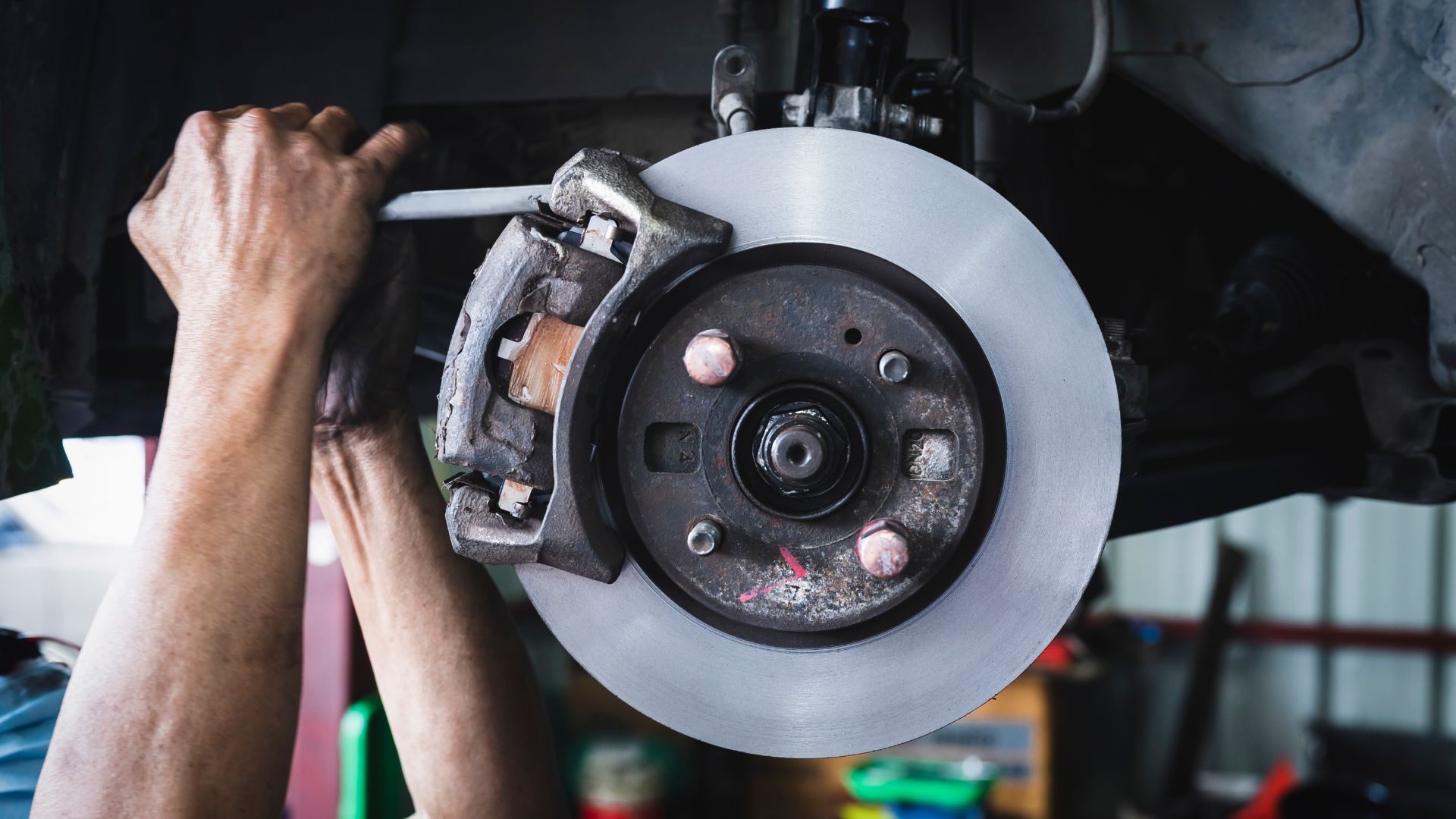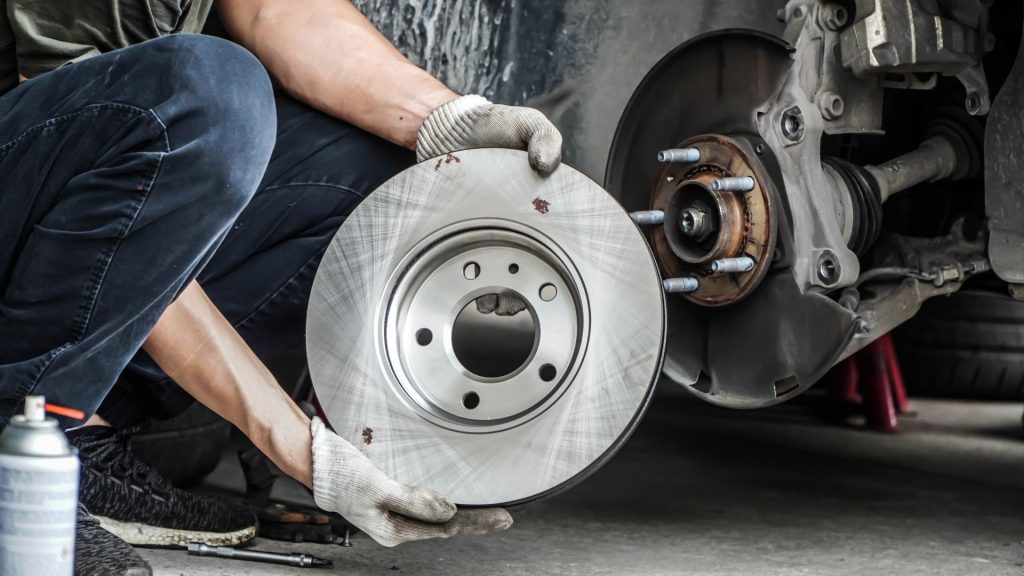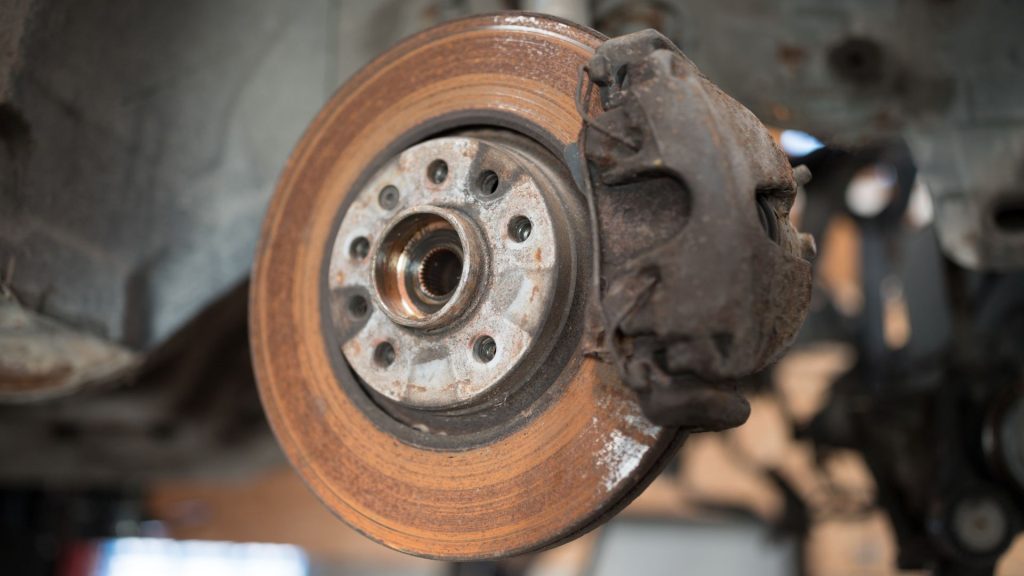How to tell if the rotor is bad – signs and fixes
Master the unmistakable signs of a faulty rotor to ensure your vehicle's safety.

Many car owners are oblivious of some of their vehicle’s parts and functions, which can become a problem in the long run. Drivers should have substantial knowledge about various aspects of their cars and their operations to use these parts adequately and combat malfunctions that could arise during usage.
There are several vehicle parts that could develop faults along the way, but here we focus on the rotor. The rotor, like other vehicle parts, will inevitably develop faults, but do you know how to tell if the rotor is bad? Before going further, let’s acquaint ourselves with the answer to the question that may be plaguing your minds at the moment.
What is a rotor in a vehicle?
The rotor in a vehicle is a flat and circular disc-like metal coupled to each vehicle wheel. It is also called a brake rotor and is made of stainless steel and spotted through the tire wheel gaps.
When the brake pedal gets initiated, the brake pads, which closely align with the rotor, grip onto the rotor’s surface, causing the vehicle to slow down and gradually come to a halt. The rotor of a car is vital and should undergo regular inspections to avoid rotor-related accidents.
Types of rotors
Different types of rotors appear in vehicles, but their function is to slow down the car through the friction generated when the brake pads rub on the rotor’s surface. The common rotor types present in vehicles include:
- Blank and smooth rotors: These rotor type has a smooth surface and blank metal surface and features mostly on passenger vehicles
- Slotted rotors: As the name implies, slotted rotors possess slots on the surface and are a common feature on larger vehicles like trucks and SUVs.
- Drilled rotors: Drilled rotors have tiny holes drilled through the surface, which control the effects of water, dust, and heat that could adversely affect the rotor.
- Slotted and drilled rotors: The slotted and drilled rotor type combines slots and holes on the surface and is a perfect choice for performance vehicles.
Signs of a bad rotor
There are a vast number of signs and signals that point out that the rotors on your vehicle are bad. Many drivers ignore these signs and, in other cases, do not understand what they mean. It is important to note that some of these signs arise from usage over time and occur naturally.
However, drivers should not ignore these signs as they can lead to severe damage to the car and put the driver at risk. Some symptoms that arise when your rotor is the wrong include;
Brake noises

Faulty rotors can cause noisy brakes. However, this is not always the case, as brake noises can also emanate from other causes, such as moisture or dirt on the rotor. Also, when the brake noise is squeaky or squealy, it is time to have the brake system serviced, and worn-out parts like the brake pads changed.
When the brake pads wear out, they cause a scraping sound to emanate when they come in contact with the rotors. The scraping action severely damages the rotors and poses a danger to drivers that still drive without having the braking system serviced.
Steering wheel vibrations
Steering wheel vibrations are pointers to a bad rotor. The constant action of the brake pads rubbing the smooth surface of the rotor generates heat, leading to the rotors getting warped, bent, or uneven. When this happens, the soft feel of the steering is compromised and can cause the driver to lose control of the vehicle. Drivers should immediately replace the rotors and brake pads when they notice this abnormality.
Grinding sounds when braking
When grinding sounds emerge from the wheels, it indicates that the brake pads have completely worn out to the metal. As a result, when the brakes are applied, the metal comes in contact with the rotor. The grinding can also occur from stones or tiny rocks lodged between the brake pads and the rotors. At this point, it is advisable to have the rotors and brake pads changed.
Deep rotor grooves
The best way to assess the condition of your rotors is by inspecting them closely and regularly. One can tell if a rotor is faulty by looking closely at them. The presence of deep grooves on the rotor is a clear indicator that the rotor is wrong and needs replacement.
Deep grooves on the rotor may arise from a variety of reasons and range from poor driving habits to damaged brake parts. Once signs like this surface, the rotors, and the brake pads require immediate replacement.
Cracked rotor
Most signs of a lousy rotor occur from usage over time and can often not be averted. The buildup of heat when the brake pads come in contact with the rotors causes the rotors to become malleable, and hence surface dents are formed.
In cases where these dents emerge, the rotors need to be changed to avoid further deterioration. Continuous usage of rotors with cuts can cause them to develop deep cracks, which can cause the rotors to snap in two. A rotor snapping in half while the vehicle is in motion can pose a significant risk to the driver.
Blue discoloration
The natural color of the rotors is stainless steel. In cases where blue marks appear on the rotors, inspecting the entire braking system is essential as an inevitable problem is underway. The discoloration usually arises from the excessive heat generated when the brakes get initiated and various other faults. Experts advise that drivers use ceramic brake pads and replace the discolored rotors with cross-drilled slotted rotors.
Long stopping distance
Newer drivers might find it difficult to notice that their rotor is faulty; however, experienced drivers tend to notice when something is off with their vehicles. When a vehicle experiences longer stopping distances and the car doesn’t stop at the designated spot and strolls further, the rotors may be compromised. In such cases, the brake pads may have accumulated dirt that causes them to slide over the rotor instead of gripping it.
Rust formation

In cases where the vehicle is left outside overnight regularly, moisture can build up and further translate to rust formations on the rotors. When this occurs, the rotors should undergo replacement immediately, as they would cease to function adequately.
The brake pads will find it difficult to grip the rotors, and the rotors can get stuck due to the over-accumulation of the rust. Faulty rotors and brake pads lead to terrible outcomes for the driver and the vehicle and need to be changed as soon as possible.
How do you tell if rotors need replacing?
Signs like inconsistent braking, strong chemical fumes, wobbling, and most of the signs listed above are strong indicators that the rotors need replacement. It is not advisable to continue using a rotor with cracks, dents, or any other irregularity, and continuous usage of bad rotors can lead to severe consequences.
Also, drivers should not wait until the rotors get completely worn out before replacing them. If possible, replacing the rotors when changing the brake pads is advisable.
How do you check your rotors?
Having your rotors checked is easy and can be carried out in the following steps;
- Take the vehicle on a test drive for self-inspection and apply the brakes at speeds of 30 mph and then at 60 mph. Feel for steering vibrations and uneven braking. Also, be alert to the kind of smell you perceive when you hit the brakes.
- Ensure that the vehicle is parked on a level surface and proceed to loosen the wheel nuts. Unscrew the bolts on the brake calipers and remove them and also detach the brake pads and brake rotors.
- Inspect the rotor surface and look for any cracks, grooves, or unevenness. Also, inspect if the brake pads have worn past the indicator.
- Thoroughly clean all the loose parts to reveal any deformity that the dirt may hide.
After going through these steps, replace any worn-out parts with new ones for a better driving experience.
How long should rotors last?
Rotors last, on average, for about the time it takes to change 2 to 3 brake pads. Also, rotors are estimated to last between 30,000 to 80,000 miles, but this is dependent on a few factors, including;
- Driving conditions
- Braking pattern
- Weather condition
- Brake pad type
- Rotor quality, etc.
How often should rotors be replaced?
It is advisable to replace the rotors every time the brake pads get replaced. However, if the rotor shows none of the signs listed above, drivers can use them till they show signs of fault. In some cases, drivers may need to change a different part of the brake system to ensure the rotors’ longevity.
Our take
Although driving pattern, rotor quality, and various other factors mentioned above contribute to the deterioration of a rotor, it is, however, impossible to use the same rotor for an unreasonably long period. Drivers should thoroughly inspect the vehicle’s braking system and completely replace every part with the slightest sign of faultiness to avoid mishaps.